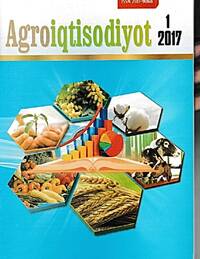Optimizing cotton irrigation regime using climatic data from mini weather station via evapotranspiration in the Fergana Valley, Uzbekistan (in Russian)

Authors:
Irrigated agriculture is the backbone of Central Asian economies and efficient
irrigation management is of crucial importance to the sustainable crop production. The ET-based irrigation scheduling method has potential to replace subjective daily water management decisions at Water Users Association level with crop water demand-based decisions to improve on-farm water-use efficiency. Results from a two year study conducted in Fergana Valley of Uzbekistan showed that there can be a 25-34% saving of water without any significant change in yield when irrigation is applied using the ET-based scheduling method. The pilot plots are representative of 38% of irrigated area in Fergana Valley (241,407 ha). If this methodology is widely adopted by the WUAs, large amounts of water can be saved which can be diverted for horizontal expansion of agriculture or for other purposes such as supporting ecosystem services
